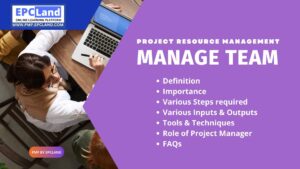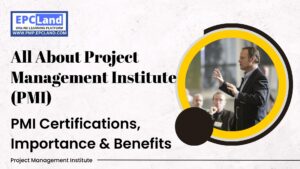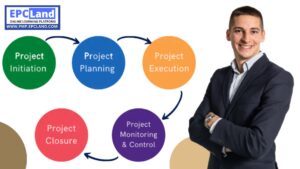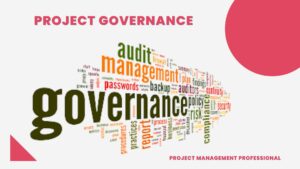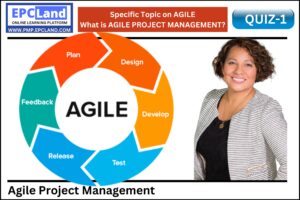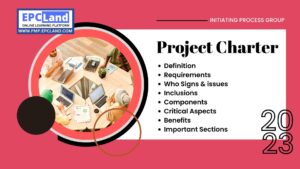A well-organized development team process is a critical aspect of successful project resource management. A streamlined process can improve collaboration, communication, and productivity, leading to better outcomes and accelerated project completion. In this guide, we will explore the key elements of an effective development team process, from the initial planning stages to post-project evaluations. Whether you’re a project manager or a team member, our tips and best practices can help you optimize your team’s workflow and achieve greater success in your projects. Whether it’s through effective communication strategies, or a focus on continuous improvement, our guide will provide you with the tools and insights you need to take your team’s performance to the next level.
What is the Importance of “Develop Resource Process” in Project Resource Management
The importance of a well-defined development team process in project resource management is significant because it:
- Improves collaboration and communication among team members, leading to more efficient and effective work.
- Helps identify and allocate resources effectively, reducing waste and maximizing productivity.
- Supports the establishment of clear expectations and accountability among team members.
- Facilitates project planning, monitoring, and control, ensuring that projects are completed on time and within budget.
- Enhances the overall quality of project outcomes by providing a structured approach to problem-solving and decision-making.
- Enables continuous improvement by providing a systematic approach for evaluating and refining processes. In short, an optimized development team process is a key factor in achieving project success and maximizing the effective use of project resources.
Attempt Quiz-1 on Develop Resource Process
What are the Various Steps required in the “Develop Resource Process” in Project Resource Management
The various steps involved in a development team process in project resource management can include:
- Project Initiation and Planning: Defining project goals, scope, and timeline, and creating a project plan.
- Resource Allocation: Identifying and assigning the necessary resources, including personnel, equipment, and materials.
- Task Delegation: Assigning specific tasks to team members and ensuring they have the necessary resources to complete them.
- Communication Management: Establishing clear communication channels and protocols among team members.
- Progress Monitoring: Regularly tracking and reporting on project progress, and making adjustments as needed.
- Risk Management: Identifying and mitigating potential risks that could impact the project.
- Quality Control: Implementing quality assurance processes to ensure project deliverables meet standards.
- Team Performance Evaluation: Regularly assessing team member performance and providing feedback to improve future results.
- Project Closeout: Reviewing project outcomes, documenting lessons learned, and preparing for future projects. By following these steps, a development team can establish a consistent and effective process that ensures successful project outcomes.
What are various Tools & Techniques used for “Develop Resource Process” in Project Resource Management
The various tools and techniques that can be used for a development team process in project resource management include:
- Project Management Software: Tools such as Asana, Trello, and Microsoft Project, help teams track tasks, deadlines, and resources.
- Agile Methodology: An iterative and flexible approach to project management that prioritizes customer collaboration and responds to change.
- Resource Planning and Allocation: Tools such as Gantt charts, network diagrams, and resource histograms to plan and allocate resources.
- Communication Tools: Platforms such as Slack, Microsoft Teams, and Zoom, which facilitate real-time communication and collaboration among team members.
- Performance Evaluation Techniques: Tools such as 360-degree feedback, performance appraisals, and benchmarking to assess team member performance.
- Risk Management Techniques: Approaches such as SWOT analysis, scenario planning, and decision trees to identify and mitigate risks.
- Quality Control Tools: Techniques such as statistical process control, inspection, and testing, to ensure project deliverables meet quality standards. By utilizing these tools and techniques, development teams can optimize their processes and improve project outcomes.
What are various Inputs required for “Develop Resource Process” in Project Resource Management
The various inputs required for a development team process in project resource management can include:
- Project Plan: A detailed plan that outlines project goals, scope, timeline, and resource requirements.
- Resource Availability: Information on the availability and capability of personnel, equipment, and materials.
- Task Definitions: Clear and specific definitions of tasks and responsibilities assigned to team members.
- Communication Plan: A plan for how team members will communicate and share information throughout the project.
- Project Budget: Information on the budget, including project costs, funding sources, and financial constraints.
- Risk Register: A record of identified risks, potential impacts, and mitigation strategies.
- Quality Standards: A description of the quality standards and criteria that project deliverables must meet.
- Performance Evaluation Criteria: A set of criteria and standards used to assess team member performance.
- Project Status Reports: Regular reports on project progress, including task completion, resource utilization, and any deviations from the project plan. By having these inputs in place, development teams can establish a structured and effective process for project resource management.
What are various Outputs required for the “Develop Resource Process” in Project Resource Management
The various outputs required for a development team process in project resource management can include:
- Resource Allocation: A detailed plan that outlines how resources, including personnel, equipment, and materials, will be used throughout the project.
- Task Assignments: A list of tasks assigned to each team member, with clear deadlines and expected outcomes.
- Updated Project Plan: A revised project plan that takes into account any changes or adjustments to the original plan.
- Risk Management Plan: A plan for mitigating identified risks and minimizing their impact on the project.
- Quality Control Plan: A plan for ensuring that project deliverables meet quality standards and criteria.
- Performance Evaluations: Regular assessments of team member performance and feedback to improve future results.
- Project Status Reports: Regular reports on project progress, including task completion, resource utilization, and any deviations from the project plan.
- Final Project Deliverables: Completed project deliverables that meet quality standards and satisfy project requirements.
- Lessons Learned Report: A report that documents key insights and lessons learned from the project, which can be used to improve future projects. By producing these outputs, development teams can demonstrate the effectiveness of their process and improve the overall success of their projects.
What is the Role of the Project Manager in “Develop Resource Process” in Project Resource Management
The role of the project manager in a development team process in project resource management is to oversee and coordinate the various activities involved in the project. The project manager’s responsibilities may include:
- Developing the project plan: Working with the team to create a detailed plan that outlines project goals, scope, timeline, and resource requirements.
- Allocating resources: Assigning personnel, equipment, and materials to tasks and ensuring that resources are used effectively.
- Monitoring progress: Keeping track of project progress and ensuring that tasks are completed on time and within budget.
- Communicating with stakeholders: Keeping stakeholders informed of project progress and addressing any questions or concerns.
- Managing risks: Identifying potential risks and developing strategies to mitigate them.
- Ensuring quality: Overseeing quality control activities and ensuring that project deliverables meet quality standards.
- Evaluating performance: Monitoring team member performance and providing feedback to improve future results.
- Controlling changes: Managing changes to the project plan and ensuring that changes are made in a controlled and organized manner.
- Closing the project: Ensuring that all project activities are completed and final deliverables are handed over to the stakeholders. The project manager is responsible for leading the development team and ensuring that the project is completed successfully and on time.
Attempt Quiz-2 on Develop Resource Process
Final Take Away on “Develop Resource Process” in Project Resource Management
The development team process in project resource management is crucial for ensuring the success of a project. With effective planning, resource allocation, and communication, project managers can lead their teams to deliver high-quality results on time and within budget. By incorporating best practices and utilizing tools and techniques, development teams can streamline their process and achieve better results. The role of the project manager is essential in this process, providing leadership, guidance, and oversight to ensure that all activities are completed successfully. Whether you are new to project resource management or an experienced professional, understanding the importance of the development team process is critical to delivering successful projects.
FAQs on “Develop Resource Process” in Project Resource Management
- What is the development team process in project resource management? The development team process is a set of activities that helps ensure the effective and efficient completion of a project. It involves developing a project plan, allocating resources, monitoring progress, managing risks, and controlling changes.
- Why is the development team process important? The development team process is important because it helps ensure that projects are completed successfully and on time. By following a systematic process, project managers can minimize the risks associated with projects and ensure that deliverables meet quality standards.
- What are the key steps in the development team process? The key steps in the development team process include: planning, resource allocation, task assignments, monitoring progress, risk management, quality control, performance evaluations, and project status reporting.
- What tools and techniques are used in the development team process? The tools and techniques used in the development team process can include project management software, team collaboration tools, risk management tools, and quality control methods.
- What is the role of the project manager in the development team process? The project manager is responsible for leading the development team and ensuring that the project is completed successfully. This involves developing the project plan, monitoring progress, communicating with stakeholders, managing risks, and controlling changes.
- What outputs are generated by the development team process? Outputs generated by the development team process can include resource allocation, task assignments, updated project plan, risk management plan, quality control plan, performance evaluations, project status reports, final project deliverables, and lessons learned report.



